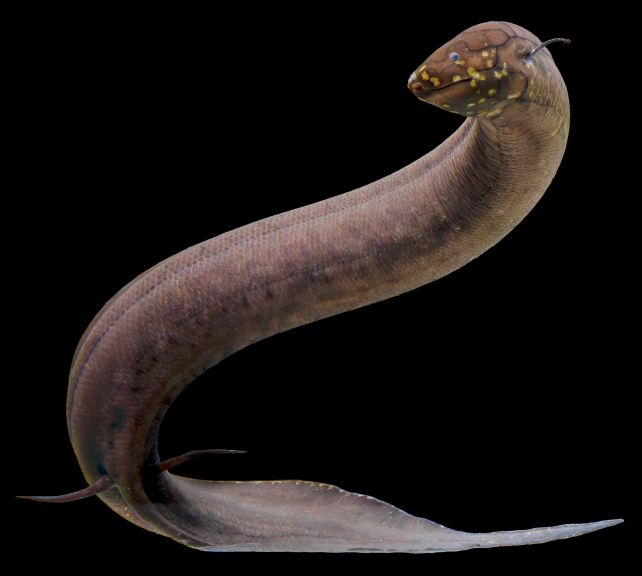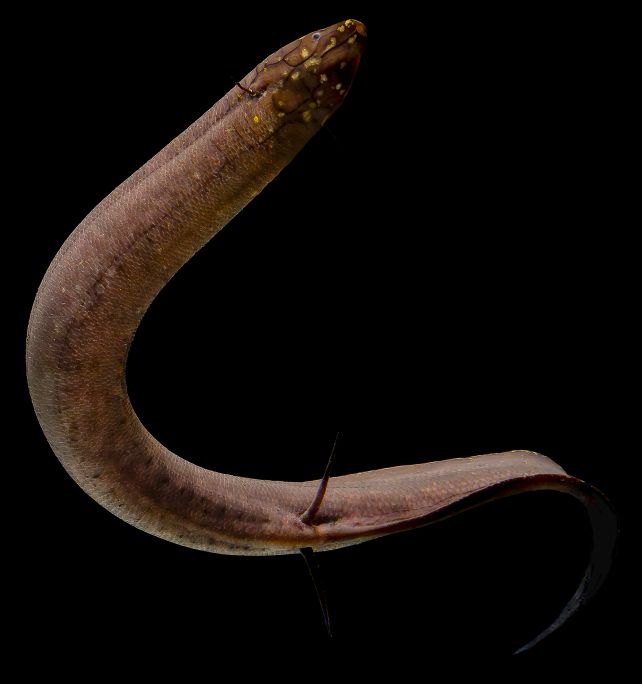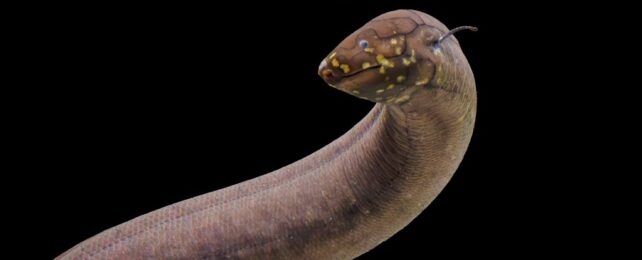The longest genome of all the animals on Earth belongs not to a giant, or a cognitively advanced critter, but a writhing, water-dwelling creature seemingly frozen in time, right at the cusp of evolving into a beast that can live on land.
These are the lungfish, a class of freshwater vertebrates whose peculiar characteristics are reflected in a colossal genetic code. Able to breathe both air and water, with limb-like fins, and a well-developed skeletal architecture, these strange ancient creatures are thought to is thought to share a common ancestor with all four-limbed vertebrates known as tetrapods.
Knowing what this length genome actually contains might be able to give us information about how our ancestors emerged from the soggy depths to walk on land, and scientists have just made a breakthrough. They've sequenced the biggest of the lungfish genomes, that of the South American lungfish, Lepidosiren paradoxa.
"With over 90 gigabases (in other words, 90 billion bases), the DNA of the South American species is the largest of all animal genomes and more than twice as large as the genome of the previous record holder, the Australian lungfish," says evolutionary biologist Axel Meyer of the University of Konstanz in Germany.
"Eighteen of the 19 chromosomes of the South American lungfish are each individually larger than the entire human genome with its almost 3 billion bases."
That marathon of DNA bases equals some 30 times the length of the human genome, to put it into perspective. Curiously, the team only counted around 20,000 protein-coding sequences.
The African lungfish (Protopterus annectens), which the researchers also sequenced, featured a similar number of individual genes, putting both coding counts roughly in the same ballpark as our own genetic library. That leaves a lot of extraneous DNA for researchers to ascribe a purpose.
Sequencing the two lungfish species follows similar work on the Australian lungfish (Neoceratodus forsteri), published three years ago. The combined sequences reveal new insights into how these fish diversified and evolved over the last 100 million years.

Lungfish are so named because, unlike other species of fish, they actually have a lung or two for respiration, a trait that would be key for enabling the transition to tetrapod life.
Those three lineages – African, South American, and Australian – are all that remain to this day. They are considered living fossils, and comparing the different ways they have all changed since the first tetrapods emerged some 390 million years ago (give or take, it's up for debate) can help us understand a vital turning point in the evolution of life on Earth, including our own species.
Meyer, his co-lead biochemist Manfred Schartl of the University of Würzburg in Germany, and their international team found that the reason Lepidosiren's genome is so huge has to do with a high number of 'jumping genes', AKA transposable elements.
These rogue sequences can copy themselves and move around the genome, which can be to the detriment of the organism they are found in – but they can also trigger rapid genetic changes.
Research on another living fossil somewhat closely related to lungfish, the coelacanth, revealed that transposons could have played a pretty significant role in the evolution of the tetrapods. Lepidosiren might be a clue as to why. For the past 100 million years, every 10 million years, the genome has grown by the entire size of the human genome.
This, the researchers found, is likely because piRNA, a type of RNA that normally suppresses transposon activity, is very low in lungfish. So their genome just ballooned.
"And it continues to grow," Meyer says. "We have found evidence that the transposons responsible are still active."

Because the jumping genes are still partying away in Lepidosiren, the researchers assumed the genome would be too difficult to analyze. To their surprise, they found that the genome is remarkably stable, and the arrangement of genes pretty conservative, keeping the lungfish lean and mean.
That also meant, though, that the researchers could reverse engineer the chromosome architecture of ancestral lobe-finned fish, not just for the three species they studied but ancesters to all tetrapods. This ancestry was confirmed by the research, giving us a more complete set of tools for understanding our own evolutionary path.
The researchers were also able to tally up some of the interesting differences between the three individual species. Australian lungfish have just one lung and can still use their gills, and have also retained the limb-like fins that once allowed them to move onto land. African and South American lungfish have atrophied gills and a pair of lungs, and their limbs evolved back into filamentous fins.
By conducting studies with mice edited to carry lungfish genes the team showed that this limb reversion had to do with changes in a signaling pathway called Shh that guides embryonic development. And more discoveries await.
"The genomes of all three lineages of lungfish, because of their crucial phylogenetic position, hold the key to a better understanding of how molecular and developmental processes and genomic evolutionary changes contributed to the conquest of land and the evolution of tetrapods, one of the main transitions during vertebrate evolution," the researchers write in their paper.
"The resource of chromosome-level genomes for all living lungfish lineages will now enable further research into lobe-finned ancestors of tetrapods who conquered land in the Devonian."
The research has been published in Nature.
